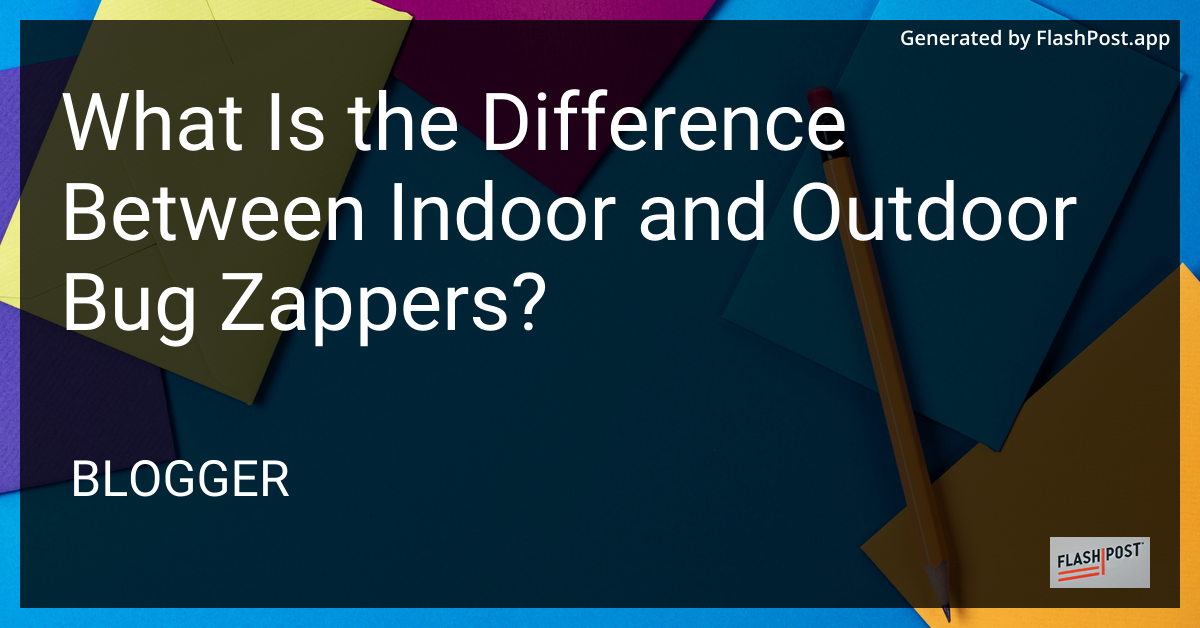What Is the Difference Between Indoor and Outdoor Bug Zappers?

What is the Difference Between Indoor and Outdoor Bug Zappers?
Bug zappers have become a popular solution for controlling pesky insects and enhancing the comfort of both indoor and outdoor spaces. With a variety of bug zappers available on the market, it’s crucial to understand the differences between indoor and outdoor models to ensure you choose the right one for your specific needs. This article explores the key differences, functionality, and best use scenarios for each type of bug zapper.
Understanding Bug Zappers
Bug zappers, also known as electric insect killers, are devices that attract and eliminate flying insects using ultraviolet (UV) light and an electric grid. When insects come into contact with the grid, they are electrocuted, providing an effective way of reducing their presence in the surrounding area. Despite their basic working principle being the same, indoor and outdoor bug zappers are optimized for different environments.
Indoor Bug Zappers
Design and Features
Indoor bug zappers are designed to be used within enclosed spaces. They are typically more compact and quieter than their outdoor counterparts, making them suitable for use in kitchens, bedrooms, and living rooms. They are designed to be safe for use in enclosed environments, minimizing the risk of accidental contact.
Functionality
Lower Emission of UV Light: Indoor models emit a lower level of UV light to ensure safety while still being effective in attracting and eliminating indoor pests.
Silent Operation: Designed to operate quietly, indoor bug zappers ensure comfort without disrupting indoor tranquillity.
Portable Design: Many indoor units feature a compact and portable design, making them easy to relocate as needed within the home.
Best Use Cases
Indoor bug zappers are ideal for controlling small flying insects like mosquitoes, gnats, and flies within home interiors, providing a bug-free environment without the use of chemicals or loud noises.
Outdoor Bug Zappers
Design and Features
Outdoor bug zappers are engineered to withstand diverse weather conditions and cover larger areas compared to indoor models. They are typically more robust and designed with weather-resistant materials to endure external environments.
Functionality
High-Intensity UV Light: Outdoor zappers use high-intensity UV lights to attract insects from greater distances, ensuring wider coverage and effectiveness.
Durable Construction: Built to withstand elements such as rain and wind, outdoor zappers feature durable, weather-resistant materials.
Larger Aside Range: These models are designed to cover large outdoor areas, making them suitable for patios, gardens, and backyards.
Best Use Cases
Outdoor bug zappers are best suited for patio gatherings, camping trips, or any open-air events where controlling insect populations enhances enjoyment and comfort.
Conclusion
In summary, when deciding between an indoor or outdoor bug zapper, consider the environment in which it will be used. For enclosed and protected areas, an indoor bug zapper offers a quiet, compact solution. Conversely, outdoor bug zappers provide robust, large-scale coverage essential for open environments. Understanding the differences ensures you select the most efficient and effective solution to meet your pest control needs.
For those looking to invest in a bug zapper, check out the top bug zapper discounts to find budget-friendly options and deals suited for both indoor and outdoor use.
Comments
Post a Comment